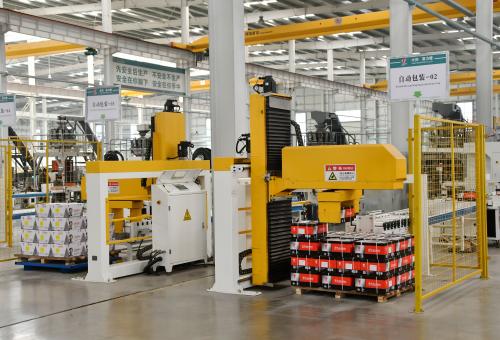Additive manufacturing (i.e. 3-D printing) is quickly evolving. The days of using the technology only to produce plastic toys are long gone. The technology is now often used for both prototyping samples and printing highly complex things, such as cars, rocket engine parts, and food. A few applications to watch over the next few months to years are 3-D printed organs, molecules, and 3-D printers themselves. Just as your smartphone gives you a calculator, camera, GPS, and computer in the palm of your hand, 3-D printers offer the possibility of allowing consumers to make whatever they wish in their community library, university, or own home.
After the novelty of being able to do this wears off, consumers probably won’t actually care how something is produced; they just want good quality, a fair price, and quick delivery. Since it seems that 3-D printers will be able to accomplish this, policymakers must work to prevent undesired consequences in the fields of intellectual property and security.
Intellectual Property
Perhaps the most widely discussed legal topic related to additive manufacturing is intellectual property (IP) concerns. While media pirating is a serious issue in its own right, the IP issues associated with additive manufacturing are far greater in scope. Unless preventative measures are taken, additive manufacturing may “upset the legal status quo.” The concern is largely based on individuals being able to print controlled products – for instance parts within the automotive, aerospace, consumer goods, and healthcare industries – within the privacy of their home. It will be difficult to not only identify this activity, but also to enforce the law. Controlling design files will only work for so long, until 3-D scanners become more advanced and affordable.
Effectively addressing the IP issues related to additive manufacturing will require collaboration between lawmakers, law enforcement, and 3-D printer manufacturers. The international nature of file sharing raises additional concerns in both the IP and security arenas.
Security
With the movement to increase gun control laws in the U.S., many are wondering how 3-D printed guns will be addressed. The State Department intends “to act as a gatekeeper for when Americans can legally publish online data that could allow someone to digitally fabricate a gun.” Posting the information online would mean violating the International Trade in Arms Regulations (ITAR), which has serious repercussions. It currently seems unlikely that criminals will go through the trouble of 3-D printing a weapon as it is relatively easy to obtain (legally or illegally) a commercial firearm, but if regulations are tightened enough to make obtaining a firearm difficult for criminals, then we must also be sure the same level – or higher – of control is applied to digital build files.
The security concerns related to additive manufacturing go far beyond firearms. There is concern that individuals may obtain access to highly classified parts for defense operations, make design files for them, and then reproduce the parts – either for sabotage or for financial gain. This threatens both military and industrial technologies. As Tristan Volpe and Matthew Kroenig point out, it is possible that 3-D printing will make it easier to secretly build the parts necessary to make a nuclear weapon. This is definitely not to say, though, that it will be possible to print nuclear weapons within a few decades as some have announced, simply because making these weapons requires weapons-grade nuclear materials, which cannot be printed.
To prevent proliferation threats from additive manufacturing, it will likely be more effective to focus on control of nuclear materials and design files than on the control of specific raw materials (such as powdered aluminum) that are used in today’s 3-D metal printers. Export controls already exist for these materials, and the materials can be used in a wide array of applications.
With design files existing in the digital realm, cybersecurity risks to additive manufacturing are very real. These involve hacking into printers, tampering with or stealing files, and possibly even causing physical damage. On February 3, 2015, the National Institute of Standards and Technology held a symposium discussing the cybersecurity threats related to additive manufacturing. They concluded that “the biggest challenge to building cybersecurity […] is culture.” Organizations may not recognize the cybersecurity risks or may resist addressing them because the fixes will be viewed as a hassle. It is suggested that risk-management guidelines for additive manufacturing be developed to easily and effectively mitigate the risks that cybersecurity poses to additive manufacturing.
Planning ahead
Ultimately, additive manufacturing intensifies the need to address existing areas of concern. In the field of IP, regulations must be developed and enforced to prevent the theft and misuse of controlled parts and products. In the field of security, it will be crucial to ensure that the laws regarding ITAR restrictions keep pace with developments in additive manufacturing. Cybersecurity risks are also a growing concern in both the military and civilian sectors. While it is still unclear just how transformative additive manufacturing will be, now is the time to plan for how we want it to be used.
Elsie Bjarnason contributed to this post.
The Brookings Institution is committed to quality, independence, and impact.
We are supported by a diverse array of funders. In line with our values and policies, each Brookings publication represents the sole views of its author(s).



Commentary
Additive manufacturing builds concerns layer by layer
December 8, 2015